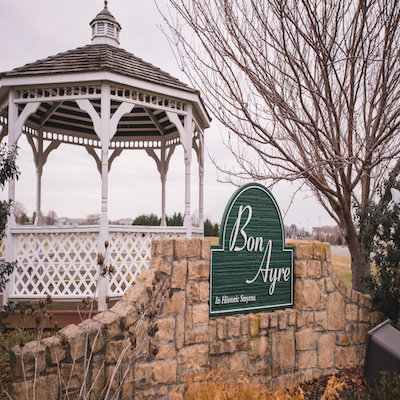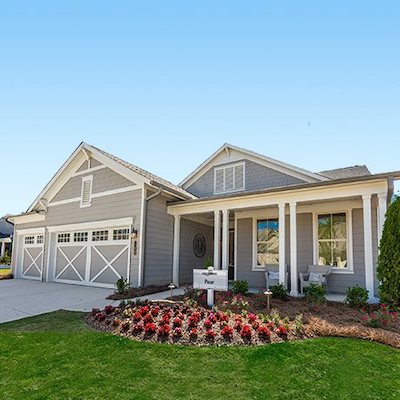Retirement Planners Par Excellence: Exhaustive Search Lands the Hinands at the Perfect Non-Profit CCRC
Category: Adventurous retirement
This is the latest in our series exploring different retirement lifestyles. Here is where you can find more retirement profiles. If you know a boomer retirement we should learn about use the Contact Us link to tell us about it.
Of all of the people we have interviewed in this series of adventurous retirements, Gail and Allen Hinand win the prize for putting the most thought and preparation into retirement. Their search led/took them from Boston to San Francisco, Key West, and (eventually) Claremont (California) in pursuit of a multi-phase retirement – one that would work from early retirement to old age. As you will see, this planning has paid off to give them a rich and rewarding life for their post-working years.
What they did
The couple grew up in the West; Allen in Montana and Gail in Washington State. They went to college in Oregon, where they met, married, and graduated with a young son in tow. Then to Boston for graduate school/seminary for Allen.
Allen, an ordained American Baptist minister, held three relatively high level jobs during his long career. The most prominent of those turned out to be quite useful for their later retirement planning. He was CEO of American Baptist Elder Ministries of New England a position he held for 20 years. Earlier, he had been pastor of a church on Philadelphia’s Main Line as well as Executive Minister of American Baptist Churches of Metropolitan New York.
Gail received her doctorate in Counseling Psychology in mid-life, and her varied and busy career following was spent in college counseling centers, ending as a VP of student services. She loved most her stint training and supervising graduate students in the joys and rigors of counseling, as well as the satisfactions of having her own small private practice.
Original Plans
In 2002 both Allen and Gail retired from their jobs. The first phase of their retirement was to physically and legally move to their frequent vacation spot, Key West, Florida. They had begun spending time there in 1990 and had bought a house in 1997. Now they wasted no time joining community life – getting involved in a small church, doing a lot of fitness/health related activities, and actively participating in the Key West’s rich cultural life. During the rest of the year they either enjoyed family at a cabin in Eastern Washington, or traveled to be nearer their children and two grandsons.
Phase 2 – Talking about later retirement
When you talk with the Hinands one of the most striking things you realize is that they are both serious planners. They had a plan for their early retirement, and another one for their older years. In this they are unique – most people don’t seem to realize that if they are lucky, their retirement will have more than one phase. Key West in the winter would be probably great through their 60’s and 70’s, but where would they want to live when they got beyond that age?
The couple knew that they wanted to find a Continuing Care Retirement Community (CCRC) for their later years. That option would let them live independently at present, but have the assurance that if their health needs changed or they lived into their 90’s, they would have a place that could address their needs, without the trauma of moving again late in life.
Having been in the elder services and retirement community for over 20 years, Allen has a preference for the not-for-profit model. He believes that because non-profits don’t have to keep their eye so closely on the bottom line, they are more inclined/motivated to use their financial resources to provide and enhance services. As a former member of the House of Delegates for the American Association of Homes and Services for the Aging (now called Leading Edge), he understands the issues the management challenges faced by retirement communities, and knows what makes for a well run, vital community. So when they set out to interview communities, the couple left no stone unturned. They looked at 20 different CCRCs. They knew just what to look for and the points to probe. When a marketing person would boast about the exercise facility, Allen might inquire how many full time staff were providing services. Sometimes he would be quiet and see how representatives talked about their facilities. All the CCRCs they explored were non-profit, some faith-based, some secular.
What their priorities were
This couple, although physically active, are not into golf or tennis. They are spiritual and intellectual people, and like being around folks with similar values and interests. They have a genuine interest in making the world a better place, and it was important that they find a place to live where residents shared their passion. For them, finding the perfect community almost trumped weather or family proximity as a consideration. As they wanted a CCRC with three levels of care, the typical active adult community was not going to be for them!
What they found – and rejected
Along the way they were attracted to a few communities – and not at all interested in many others. In one community near San Francisco they had lunch with a resident couple, he the head of the residents’ council no less, only to learn that the couple’s friendship network, interests and activities were outside of this residential community. The Hinands were relieved to find out in advance that many residents of this CCRC didn’t seek their community within.
They liked another community in San Francisco proper, but realized that city life does not lend itself to walking or biking for elders (all those hills)! In another very high end and faith-based facility it seemed like the daily happy hour was a little too festive. There was a high rise condo-style CCRC, planned to be nicely Integrated with the surrounding neighborhood, that they liked enough to put a deposit on. Unfortunately, the housing downturn stopped the development (they got their deposit back). At this point, feeling a bit discouraged, they remembered Pilgrim Place, a community in Southern California they had previously visited and had friends.
Pilgrim’s Progress
The Hinands went back for a visit and quickly realized that Pilgrim Place was the place for them. 
– Labeling itself an Intentional Community, it is expected that residents will become very involved in the life of the community (working year long for the annual Festival, serving on one of dozens of committees, attending the noon/mail meal in the dining halls, volunteering one’s time and talents in various ways)
– Very heavy involvement by residents in policy decisions (unlike many communities, where policy is staff or board driven)
– About 80% of the homes are single family (single story, detached) with the remainder apartments, some newly built
– The 32 acre campus is walkable and is 4 blocks to the campus of the Claremont Colleges and 10 blocks to the downtown village of Claremont (plus six blocks to Trader Joe’s!)
– A wellness program is important in this community. There is a large indoor pool open 18 hours a day, a fitness center with 2 full time trainers and lots of equipment, and a variety of related activities (yoga, Tai-Chi, fast walking). Each resident is entitled to 2 hours a week with a personal trainer, should they choose, and wellness related programs provide medical support in other ways
-New residents don’t actually purchase their home with their entry fee, but rent and work with the administration to personalize/enhance their homes via a charitable conribution; PP refurbishes with new appliances, painting, etc. at each turnover of the house.
– Residents may elect to get a 90% refund of their “entrance fee” for their estate
– Pilgrim Place has a program to help both new and existing residents who can neither afford the entry/purchase price or ongoing monthly expenses. A popular annual Festival is a big part of the fundraising used to help attract qualified new residents and retain those who might have had a financial setback.
– Programs and activities are amazing and extensive. For example, there is a 75 voice choral group which perform several times a year, led by a trained and experienced choral director/resident. Allen is part of a furniture moving group – e. g., folks moving to assisted living can call upon them for help moving, or Claremont environs residents can call on them to pick up unwanted belongings (which then go to the Furniture Barn for sale, further enriching the fund to help others).
They found a responsive staff that seeks to partner with resident concerns/issues, as well as a well-run community that gives them a sense of security and well-being for the long haul.
Unique aspects?
To promote intentional community, Pilgrim Place expects that residents will live there most of the year. This has changed somewhat as active elders may teach or work elsewhere part of the year.
Mixing, and not cliquing, is very much encouraged. For example at the noon meal, it is generally expected you will attend. You are billed monthly whether you attend that meal or not, and there is a computer generated seating chart, changed daily.
– The ethos at Pilgrim Place had been that you will move here as soon as you retire. That too is changing somewhat, but there is a maximum age for joining – 78.
Advice
Although the Hinands have chosen a very unusual community, one that matches their personal preferences, they have plenty of good advice for anyone looking to find their best place to retire:
– Make lists on what is important to you. Do you want to be close to kids or grand kids (but remember, they will grow up)! How important is weather or being near water, or being near an airport?
– In what kind of dwelling do you want to live ? Be very specific – house, condo, high rise, old, new, 1 story, universal access, etc.
– The latter third of life should be thought of as an opportunity, so choose a community where you have the opportunity to spend time and energy doing what you want.
(That’s why the Hinands chose an intentional community, a place that gives them the opportunity to be actively involved with other thoughtful and committed people.)
Comments: What kind of community do you want to live in for retirement? Have you thought beyond your initial retirement to those days when, even if you are fortunate enough not to require assistance with daily living tasks, you might want an environment that makes daily living easier? Please share your ideas with your fellow members in the comments section below.
Bulletin: Gail has just written a book about Key West’s famous authors and the homes they live in. You can find the Kindle edition of “Haunts and Homes: a tour of Key West Writer’s History” at Amazon.






Comments on "Retirement Planners Par Excellence: Exhaustive Search Lands the Hinands at the Perfect Non-Profit CCRC"
Holly says:
The Hinands were exceptionally fortunate to find a community that had been developed for their peers with similar backgrounds! Does Top Retirements have a directory that lists peer groups such as "many former educators" or "many former CEOs"? I know demographics change over time, but like does attract like even if the was no original intent in setting up the community as there was for Pilgrim Place. As a retirement coach this would be a great resource for my clients. Thanks for the great article.
Marge says:
I too would like to see a list of "Intentional" style communities in the US.
As we Baby Boomers retire, some of us are interested in a more intellectual climate, or a more specialized interest retirement community. Not all of us enjoy just golf!
Any communal living style communities in the Upper Midwest out there?
Ruthie says:
Great article. I love the idea of intentional communities. We also would like to be involved in a community that desires to make the world a better place. We also want to be near and part of an active outward looking church. We are just starting the search and find your articles helpful.
oldnassau'67 says:
If you don't care about the US's highest state income tax and highest sales tax, California is fine.
From the Wall Street Journal, yesteray (Tuesday, Mar 13th): "California's Greek Tragedy":
"No one should write off the Golden State. But it will take massive reforms to reverse its economic decline....Meanwhile, the state lurches from fiscal tragedy to fiscal farce, running deficits in good times as well as bad. ....Now, the bill is coming due...Gov. Jerry Brown's budget increases spending next year by $7 billion and finances the higher spending with income and sales-tax hikes. Specifically, he's proposing a November ballot initiative raising the state's top income tax rate to 12.3%, making it the nation's highest, and raising the basic state sales tax rate, already the nation's highest, to 7.75% from 7.25%..."
(Google "California's Greek Tragedy")
Everette says:
The most important consideration is the CCRC's financial strength.
In essence, the consumer is "buying" into likely future expensive care (assisted living, dementia care, nursing care, and hospice), often many years away.
The only way a CCRC can provide expensive future care is by having strong finances through its members entrance fees and monthly payments (with some help from a healthy endowment).
A GAO report said consumers face financial risks of losing the entrance fee or in substantially increased monthly fees in CCRCs.
In addition to all of the amenities, it would be very helpful if future CCRC articles would focus on how consumers can minimize the financial risks of CCRCs.